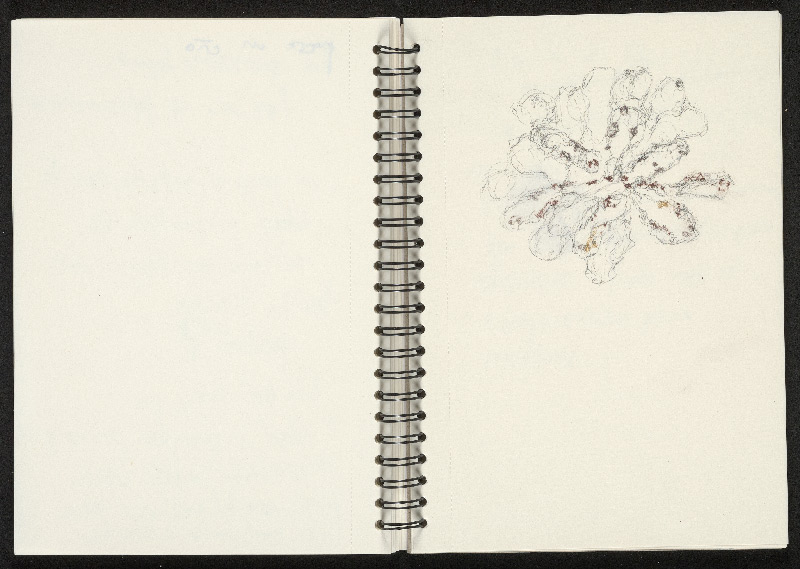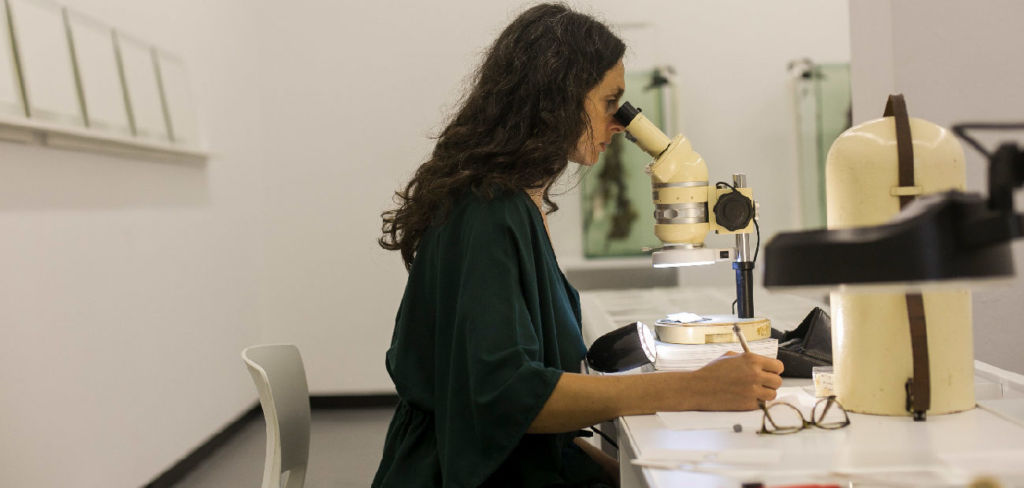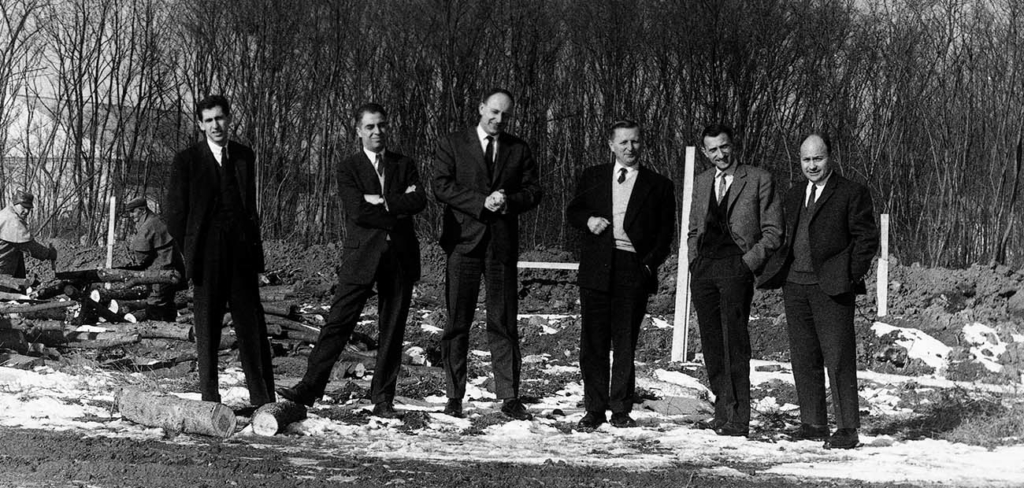Artist Irene Kopelman and scientists at the marine station IMEV (Institut de la Mer de Villefranche) and IRCAN (Institute for Research on Cancer and Aging), in Nice (France) are developing a project that highlights crucial organisms in the chain of life and evolution, shedding precious light on this marine world, a true mirror of today’s ecological and health challenges.
Il ne s’agit pas pour Irene Kopelman de reproduire ou représenter mais de trouver une forme et technique spécifique à son dessin pour arriver à transcrire la vitesse de croissance et les phases de métamorphose de l’organisme observé.
Ensemble des caractères physiques et biologiques d’un individu.
Les Tuniciers sont des organismes marins qui ont en commun plusieurs traits d’organisation originaux ; en particulier, leur corps est généralement entouré par un revêtement épais, la tunique. Ils présentent des affinités profondes avec les vertébrés.
February. The wind is blowing in Villefranche-sur-Mer. The boat masts clatter in the harbour that stretches out below the marine station. I have an appointment with artist Irene Kopelman, who has become a familiar figure in the area for the past month. I’m about to discover one of the laboratories she is working with and meet her contacts. Since her first visit to Nice in late 2017 to prepare her solo exhibition at the MAMAC (Museum of Modern and Contemporary Art), we have been planning to include her research in the fertile territory of marine studies and this unique Mediterranean ecosystem. The encounter with Stefano Tiozzo, Research Director at the Villefranche-sur-mer Developmental Biology Laboratory (LBDV), and then with Eric Röttinger, Research Director at the IRCAN (Institute for Research on Cancer and Aging, in Nice) together with the support of the Université Côte d’Azur gave a decisive turn to events, making this adventure possible at the crossroads between scientific research and artistic experimentation.
During her first immersion period in the laboratory, in the winter of 2019, the artist was able to familiarize herself with the respective study topics of the two teams, their points of convergence and the research protocols for invertebrate marine creatures. This first round of observation, which would have been impossible without the curiosity of the research directors and their openness to possible friction with other disciplines, raised their confidence in IK’s approach and demonstrated her understanding of the time and resources issues in a long-term collaboration. It also highlighted the potential contribution for the researchers of her observation outside the canons of science, and the opportunity to gain complementary knowledge by introducing a shift in perspective at the core of expertise. The relevance of this new residency project was thus confirmed, and the artist has been working on it since the beginning of 2020.
In science as in art, knowledge comes from practice
Familiar with these hybrid territories, IK has been driven for years by the conviction that science and art share a common stake in knowledge based on practice. Since 2005, she has conducted numerous research residencies in collaboration with natural history museums, geological collections (London, Amsterdam), natural parks (Hawaii) or laboratories such as the Smithsonian Tropical Research Institute in Panama or the Manu Learning Center in the Peruvian forest, observing their field work before initiating her own subject of study and representation protocol. Of Argentinean origin, based in Amsterdam, she explores the world’s exceptional ecosystems seeking to understand the mechanisms of the living world. Each new site represents an opportunity for the artist to immerse herself. First of all, from a sensory point of view: she senses the landscape, experiences its scale, its movements, or the cycle of metamorphosis of living beings; from a visual angle, of course; and finally from an intellectual point of view (working with the scientific teams on site to discover the recording tools, to understand the life of these ecosystems or creatures and their role on a large scale). These phases of observation result in graceful drawings or paintings, bordering on the abstract, whose fragmentary patterns evoke samples of landscape or manifestations of the behaviour and life instincts of the species observed. This work “on patterns ” and the practice of observing “from nature” refers to the explorations of naturalists in the 18th and 19th centuries who, like Alexander Von Humboldt or Charles Darwin, during their expeditions around the world, accumulated a number of observations on fauna, flora, species and geography, brought back herbariums and illustrated plates testifying to the wider world they were exploring. This genealogy of the artist’s practice, based on the history of science and with drawing as a tool of knowledge, found an immediate echo during our visit to the Observatory’s incredible documentation centre with, in particular, the discovery of the works and plates of biologist and philosopher Ernst Haeckel that document marine biology.
In 2016, IK embarked on research based on the colour of natural water, in dialogue with the Royal Netherlands Institute for Sea Research (NIOZ). This project marked her first encounter with marine micro-organisms, in the form of plankton on this occasion. Having explored glaciers, ice floes and tropical forests, the marine universe and the question of scale between this ecosystem and the micro-organisms it shelters, offered the artist a promise of new creative processes.

Irene Kopelman, Test Drawings Botrylle, Laboratoire de Biologie du Développement de Villefranche-sur-Mer (LBDV), 2020
Meet our cousins Nematostella and Botryllus schlosserei
The Nice and Villefranche laboratories then opened the door for her to work on a subject seldom treated by artists, that of tiny marine invertebrates of the cnidarian family in Eric Röttinger’s laboratory (corals, sea anemones, jellyfish) and ascidians in Stefano Tiozzo’s laboratory. IK chose to study Nematostella and Botryllae, which form colonies of clones with floral forms. The research focus of the two laboratories is the regenerative capacity of these two creatures and the study of the factors of their longevity, with prospects for medical applications in the future. “They are our cousins,” Stefano Tiozzo tells me with a smile as he introduces me to several colonies of Botryllus, which bloom between two glass plates in the laboratory. “It’s one of the organisms closest to vertebrates,” he says. IK installed me in the space provided for her and showed me several colonies under the microscope while explaining the precise protocols she has to follow in order to observe them without stressing them or causing them pain. We return to the harbour, where she shows me some Botryllus samples and explains: “I like the ritual. Would each plate have a different colour? How many variations might exist? Would I need to look at all of them one by one?” She goes on to describe their growth phases, their colour changes and properties. For several weeks now, she has been taking part in professional meetings with scientists, exchanging ideas with them, questioning, observing, building up her knowledge, and trying to place herself from the point of view of her subject of study. Her method: “look, take notes, think, draw”. The act of drawing is part of the process of understanding, but it only comes after familiarising herself with the creature’s characteristics. The choice of technique is closely related to what she perceives not only intellectually but also intuitively. The first watercolour tests, sublime, ethereal, express the diaphanous nature, transparency and lightness of these marine organisms. The colour tests she shows me reveal the subtle evolutions of their hues according to the stages of their existence. Quickly, however, she switches to using a pencil, which is faster and more capable of expressing the rapid cycles of metamorphosis of these creatures. The challenge posed, up to now, is how – in her words – to “perform” the drawing, to accompany and translate this process of evolution and its successive states. The artist’s raw notes, consulted after the visit, trace a progressive empathy with Nematostella:
“12 February New words, an anatomy I don’t understand, the logical hypothesis that I think I understand more than I probably do. I’m welcome to the lab, and with the best intentions, they explain a million things to me, I try to keep up, I try to relax, like the little organisms. I observe the breathing of the organisms; I try to get into their rhythm, and even breathe together. (…) My new subjects… very soft ones. Full of transparencies, soft pink, an orangey pink. Words seem too strong to describe them, they are so soft. If I were to draw them today, I would do it only with transparencies. 28 February I am compelled by the softness of the organisms – the colours are soft, the movement too. There is nothing violent in them, neither the colour, nor the materiality, nor the movements. (…) The movement of the animals provokes a loose line – for which I have been searching for a long time.”
When we meet up with Eric and Stefano again, Irene explains: “I have a strong belief in drawing as a tool for understanding and gaining knowledge, a way to activate a particular type of thinking.” Asked in return about the implications of this artistic presence in their laboratories, both insist on the timeliness of the observations made by Irene because they go beyond the parameters of research. “Irene looks at and takes note of morphological details and colour evolutions that are not part of our protocol and from which we could learn lessons or behavioural traits that could offer new phenotypic markers.1”, explains Stefano, while Eric adds: “Unfortunately, modern science often tries to focus on the complicated and technically fancy things rather than taking the time to observe the research models properly. Thus, having Irene in the lab, who uses an observation-based and unbiased approach to assess our research model and the biological question we’re asking, might lead to very unexpected observations that we may have overseen.” Both also evoke their desire to make their field of research known beyond the scientific world and the opportunity that such links with the world of culture can represent.
Struck by their capacity to include heterogeneous fields and to accept a form of permeability with other ways of thinking, I understand that our two scientists are already accustomed to thinking out of the box, confronting their practice and their teams with the perspective of, for instance, philosophers or ethics specialists. It is a way of revitalizing the research process by introducing other patterns of thought.
The online presentation of Stefano’s laboratory should already have made that clear to me. It starts with a quote by John Steinbeck taken from a book based on an expedition to the Sea of Cortez with his friend Ed Ricketts, a marine biologist:
“There are colonies of pelagic tunicates2 which have taken a shape like the finger of a glove. Each member of the colony is an individual animal, but the colony is another individual animal, not at all like the sum of its individuals… So a man of individualistic reason, if he must ask, ‘Which is the animal, the colony or the individual?’ must abandon his particular kind of reason and say, ‘Why, it’s two animals and they aren’t alike any more than the cells of my body are like me. I am much more than the sum of my cells, and, for all I know, they are much more than the division of me.’” John Steinbeck, The Log from the Sea of Cortez, (1951)
Ricketts was motivated by an ecological vision according to which man is only one component of a great chain of living beings. A family, in short… an interrelation, above all, of living things from their tiniest components. All this resonates more than ever with our contemporary world caught in a web of interdependence…
The project that is being constructed between the artist and the scientists highlights crucial organisms in the chain of life and evolution and sheds light on this marine world, a true mirror of today’s ecological and health issues.
[rl_gallery id=”21068″]
Irene Kopelman, Test Drawings Nematostella, Institut de Recherche sur le Cancer et le Vieillissement de Nice (IRCAN), 2020
Translation by Angela Kent
With the invaluable assistance of Irene Kopelman, Eric Röttinger, Stefano Tiozzo
Residency conducted at the Institute for Research on Cancer and Ageing in Nice (IRCAN) – Université Côte d’Azur, CNRS, INSERM; Villefranche-sur-mer Developmental Biology Laboratory (LBDV), The Villefranche-sur-Mer Marine Station, IMEV, Sorbonne University, CNRS.
And with the support of Université Côte d’Azur.








